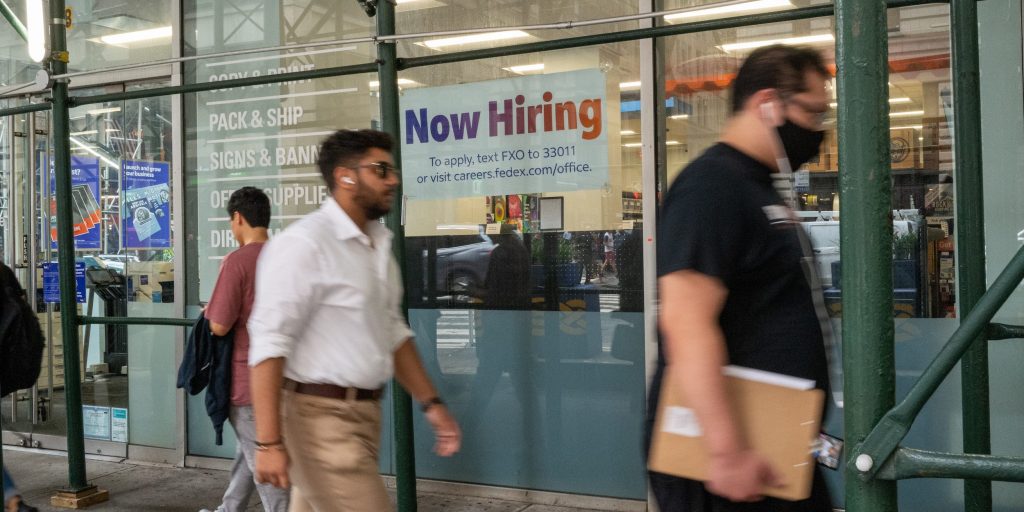- The US added 528,000 jobs in July, exceeding the median estimate of 250,000 new payrolls.
- The unemployment rate fell to 3.5%, landing below the 3.6% forecast.
- The report shows job creation rebounding despite rising interest rates and slower growth.
Job creation surged past economists' forecasts in July as the labor market's strength overpowered higher interest rates and elevated inflation.
The US economy added 528,000 nonfarm payrolls last month, the Bureau of Labor Statistics announced Friday. Economists surveyed by Bloomberg anticipated a gain of 250,000 payrolls. The print shows job growth rebounding from the month prior as labor demand held steady through the summer.
The June increase was updated to 398,000 payrolls from 372,000. The May count was revised to a final count of 386,000, up from the prior total of 384,000 jobs.
Overall employment now sits above the levels seen just before the pandemic hit. Several sectors, including the government, have yet to fully rebound, but changes to the economy and how Americans work will likely have a lasting effect on the labor market's makeup.
The unemployment rate fell to 3.5%, according to the report. That came in below the median economist forecast of 3.6% and matched the five-decade low seen before the pandemic.
Leisure and hospitality once again led the way in job growth with an increase of 96,000 jobs. Within that sector, restaurants and bars counted for 74,000 new payrolls. Employment in the sector is still down roughly 1.2 million payrolls from pre-crisis levels, but the past several months suggest such businesses will continue to add jobs the fastest.
Professional and business services followed with a 89,000-payroll gain. Health care firms created 70,000 jobs, and the government added 57,000 new payrolls.
Clothing and accessories stores posted the largest drop in employment, shedding 5,200 jobs through the month. Some sectors saw hiring largely unchanged through the month, and the majority posted healthy gains.
The July report snaps a months-long trend of moderately slowing job growth. The pace of hiring has been unusually fast throughout 2022 as companies' healthy demand for workers overshadowed hurdles like the Federal Reserve's rate hikes and persistently rising prices. Job openings data for June suggested that labor demand could be turning over, but with overall openings still above 10 million and nearly doubling the number of available workers, the economy will likely keep adding payrolls through the near term.
The hiring backdrop, however, is getting more difficult. The Fed raised rates by 0.75 percentage points in late July, matching the size of its June hike and pushing the federal funds rate to a range of 2.25% to 2.5%. That range is broadly viewed as "neutral" by Fed officials, meaning it neither stimulates nor restricts the economy. That means borrowing costs are no longer at the low levels that supported companies over the past two years. And as the Fed continues with its hiking cycle, rising interest rates could further curb job creation.
This story is breaking, check back soon for updates.
